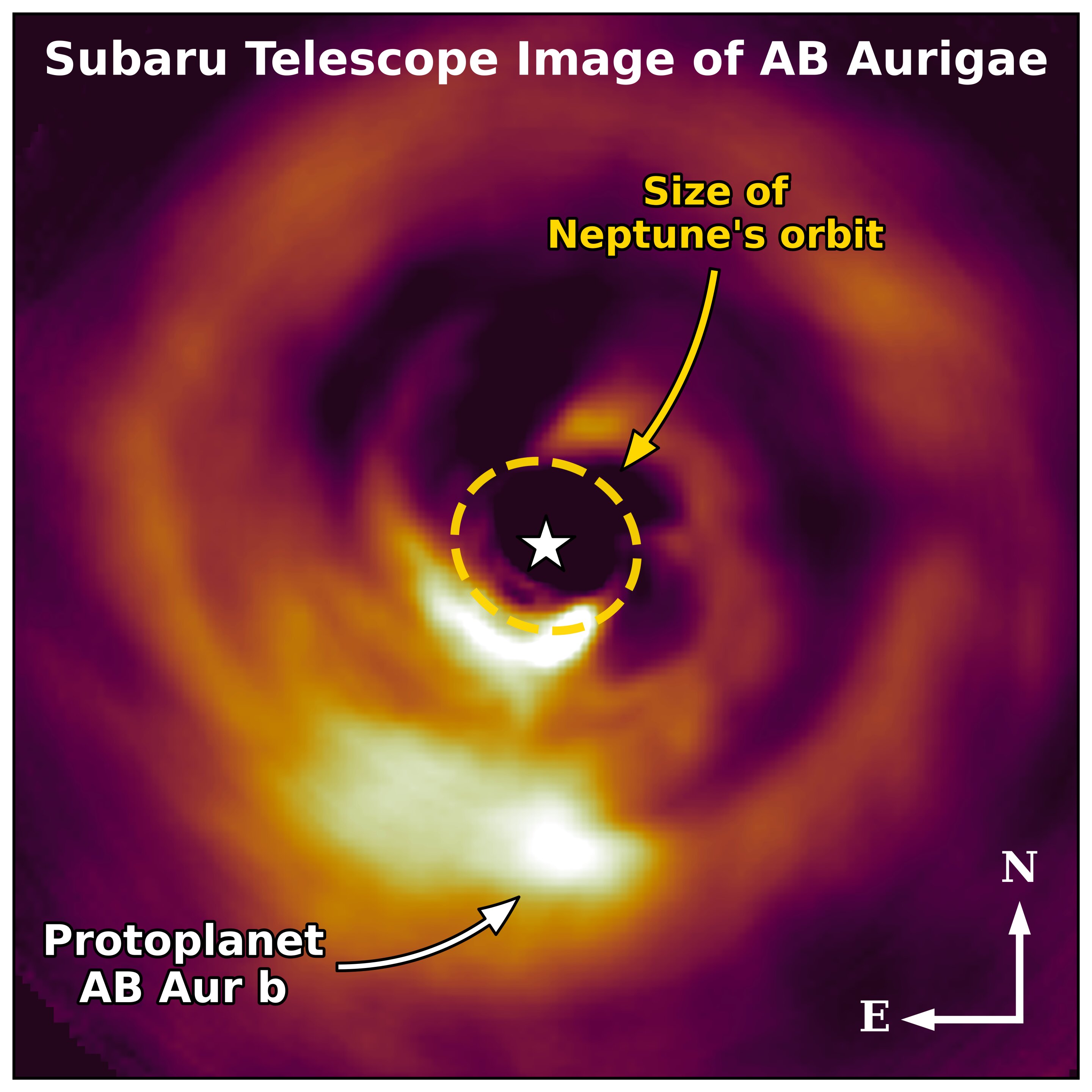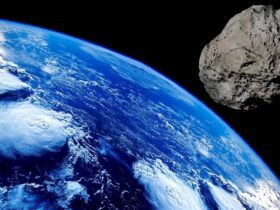Astronomers have captured images of a Jupiter-type protoplanet in the making using NASA’s Hubble Space Telescope, which they characterize as a violent and intensive process. “Disk instability” has been a long-debated notion about how worlds like Jupiter develop. A newborn star, thought to be roughly 2 million years old, is surrounded by a protoplanetary ring of dust and gas in which a new world is being built. When our solar system was in its infancy, planets were forming.
 (Credit: T. Currie/Subaru Telescope)
(Credit: T. Currie/Subaru Telescope)
Most planets are constructed of matter that came from a disk around a star in the vicinity of which they formed. Jovian planets are thought to be formed through a process known as “core accretion,” which is a bottom-up technique in which the disk’s tiny items (varying in sizes between dust granules to a boulder) collide and cling together as they circle their star. After a while, the disk’s gas collects in the core. The disk instability model, is a bottom-up concept in which gravity forces a huge disk orbiting a star to quickly break apart, becoming 1 or even more planet-mass pieces.
Nearly two times as far away as Pluto is from the Sun is the freshly formed planet, AB Aurigae b, which is nearly 9 times as big as Jupiter and circles its home star at an incredible 8.6 billion mile distance. Creating a Jupiter-sized planet through core accretion should take quite a long time, if it ever does, at this distance. Scientists believe that disk turbulence is to blame for the planet’s formation at such a considerable distance from the Sun. It also stands in stark contrast to the generally recognized core accretion model’s predictions for planetary formation.
A better appreciation of the origins of Jupiter-like planets helps astronomers better understand our own solar system’s evolution. AB Aurigae’s chemical composition may now be studied in more detail using NASA’s James Webb Space Telescope, thanks to this finding.
The study was published in Nature Astronomy.












Leave a Reply